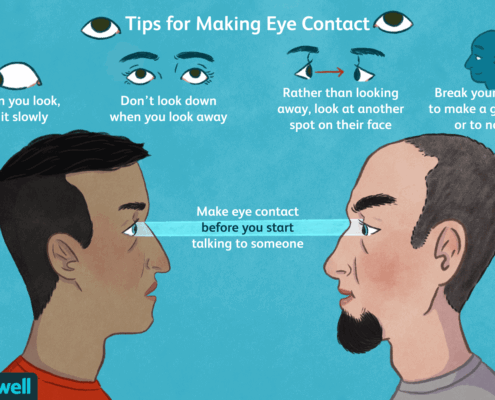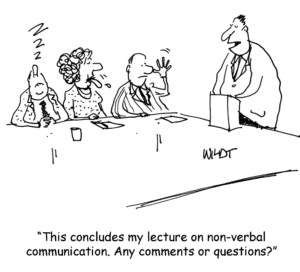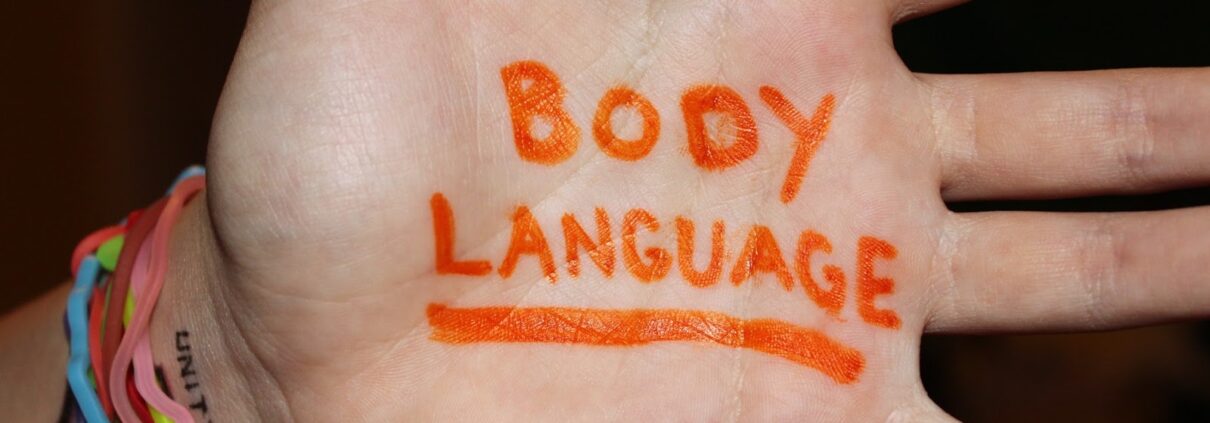Your Body Is A Communication Tool
Your Body Is A Communication Tool
 In the last post we began the consideration of the reality that your body is a communication tool in preaching. I made a list of things you should not do in using your body while you speak. Don’t slouch; avoid putting your hands on your hips; never cross your arms or put your hands in your pockets; and don’t look uptight. That’s a good list to begin with. This past weekend, though, I led a class on preaching at the Christian Leaders Institute convention, and asked the class that I was leading what are some things to avoid in body language. They added a couple that are especially problematic for the preacher.
In the last post we began the consideration of the reality that your body is a communication tool in preaching. I made a list of things you should not do in using your body while you speak. Don’t slouch; avoid putting your hands on your hips; never cross your arms or put your hands in your pockets; and don’t look uptight. That’s a good list to begin with. This past weekend, though, I led a class on preaching at the Christian Leaders Institute convention, and asked the class that I was leading what are some things to avoid in body language. They added a couple that are especially problematic for the preacher.
Eye Contact Is Essential
I’m thinking of a man that I heard preach only one time. What I remember about the presentation is not the material. What I remember is the fact is that he read his manuscript without ever looking at the audience. As a result, he just didn’t engage with us. It seemed like he was not talking to us, but only to himself.
What I remember is the fact is that he read his manuscript without ever looking at the audience. As a result, he just didn’t engage with us. It seemed like he was not talking to us, but only to himself.
Body language experts tell us that eye contact indicates that you are engaged with your audience. Failure in maintaining some level of eye contact will negatively impact how people engage with the message you want to convey. Watch some effective speakers, and notice how they connect, and follow their example in this regard. You don’t have to connect with every person’s eyes, but you do need to let your gaze roam over the audience occasionally so that the people feel like you are connecting with them. Remember, your body is a communication tool to be used to emphasize your message!
Stop Annoying Fidgeting
 The class also suggested that some speakers have annoying habits that distract from the message. My mind flashed back to a speaker that we had in the high school I attended. He was a mass of quirky movements. One of the most distracting was that he would reach down regularly and pull up his socks. Yes, really! As he was exhorting us high school kids about our faith, he would pause and reach down and pull up his socks! He also seemed obsessed with his glasses. He would take them off, and then put them on again–over and over. As I remember, his message was pretty good, but afterward we talked more about the distractions than about his message.
The class also suggested that some speakers have annoying habits that distract from the message. My mind flashed back to a speaker that we had in the high school I attended. He was a mass of quirky movements. One of the most distracting was that he would reach down regularly and pull up his socks. Yes, really! As he was exhorting us high school kids about our faith, he would pause and reach down and pull up his socks! He also seemed obsessed with his glasses. He would take them off, and then put them on again–over and over. As I remember, his message was pretty good, but afterward we talked more about the distractions than about his message.
An Example
Stephen Rummage makes this one of his points in the Lifeway Research blog:
- Identify your nervous gestures. Some gestures are distracting because they are just plain weird. One preacher developed the odd custom of lifting up on his toes and clicking his heels after making an important point, as though he were Dorothy trying to get back to Kansas. A word of correction from his wife cured him of this habit quickly. Every preacher has the tendency to develop nervous gestures from time to time. These can include gripping the pulpit with white knuckles, folding your arms like a judgmental Pharisee, tugging at your sleeves, buttoning and unbuttoning your coat, fiddling with your eyeglasses, putting your hands in your pockets, playing with your keys (something best left in your study!), scratching your nose continually, or some other nervous mannerism. Even experienced speakers will find themselves slipping into bad habits without regular monitoring and feedback.
The point is that your body language can be negative in many ways. Some people will flip their hair while they speak. Others will scratch their nose; or fidget with a manuscript. Remember, your body is a communication tool that can positively enforce your message, or negatively draw attention away from your message. So, identify which annoying habits you use, and do away with them through practice.
Positive Ways To Use Your Body As A Communication Tool
Okay, enough about the negative for now. In the next post we’ll turn more toward the positive ways to use our bodies as communication tools.



